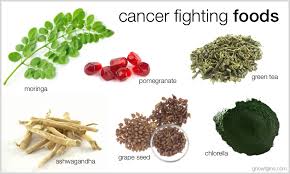Leave a Comment:
6 comments
My girlfriend has been diagnosed with high risk hpv 16 related cervical neoplastic growths.
I have noticed some small odd growths and a large painless tonsil to one side,
I am 20 and have only had these symptoms for a year or so at least I would assume.
Is there any benefit to me trying PDT now as a precaution , if I were to possibly eventually get oral cancer ?
Hi Aaron,
Several things. My understanding is that cervical neoplastic grows as well as your own “small odd growths” are not cancer. Undergoing any therapy brings potential risks and side effects. Therefore, undergoing PDT would expose you to risks that only cancer patients would risk.
Secondly, while the research is preliminary, a nutritional supplement called AHCC, according to the article linked below, has been shown to get rid of HPV. The article doesn’t specify if all strains are eradicated but this simple therapy might be worth a try.
I wrote about this subject awhile ago- AHCC, HPV, Integrative Cervical Cancer Therapy
Mushroom extract, AHCC, helpful in treating HPV
Let me know if you have any questions.
David Emerson
ReplyI read your Blog is a very useful for my knowledge Thank you for your great blog i really like it..
Oncosurgeon Lasers in Cancer Treatment
Laser light can be used to remove cancer or precancerous growths or to relieve symptoms of cancer. It is used most often to treat cancers on the surface of the body or the lining of internal organs.
Laser therapy is often given through a thin tube called an endoscope, which can be inserted in openings in the body to treat cancer or precancerous growths inside the trachea (windpipe), esophagus, stomach, or colon.
However, the effects of laser surgery may not be permanent, so the surgery may have to be repeated.
Laser therapy uses high-intensity light to treat cancer and other illnesses. Lasers can be used to shrink or destroy tumors or precancerous growths. Lasers are most commonly used to treat superficial cancers (cancers on the surface of the body or the lining of internal organs) such as basal cell skin cancer and the very early stages of some cancers, such as cervical, penile, vaginal, vulvar, and non-small cell lung cancer. Lasers also may be used to relieve certain symptoms of cancer, such as bleeding or obstruction. For example, lasers can be used to shrink or destroy a tumor that is blocking a patient’s trachea (windpipe) or esophagus. Lasers also can be used to remove colon polyps or tumors that are blocking the colon or stomach. Laser therapy can be used alone, but most often it is combined with other treatments, such as surgery, chemotherapy, or radiation therapy. In addition, lasers can seal nerve endings to reduce pain after surgery and seal lymph vessels to reduce swelling and limit the spread of tumor cells.
Thank you,
Dr. Rusy Bhalla
Hi David,
I came across your page here and am hopeful about the use of PDT.
I was just diagnosed with squamous cancer that first showed in my lymphnode at base of my neck on left side and after PET scan showed lesions on my tongue. It has not spread to anywhere else in my body.
I’ve searched the web and found many articles but can’t find which cancer centers are now doing this treatment. Can you help me. I see that Roswell Park Cancer Institute in NY is open for enrollment to a clinical trial.
Can you help me.
Thankyou,
David
Hi David-
You are correct. There are many articles on the Internet citing photodynamic therapy for squamous cell oral cancer. Yes, Roswell is running a clinical trial.
Are you saying that you do not want to go to Roswell for some reason? There are many oral cancers listed in the clinical trial description. The center must be experienced with the therapy.
If you do not want to go to upstate NY, let’s look at this a different way. Where do you live? I will search cancer centers that list PDT on their websites accordingly.
David Emerson
Reply



